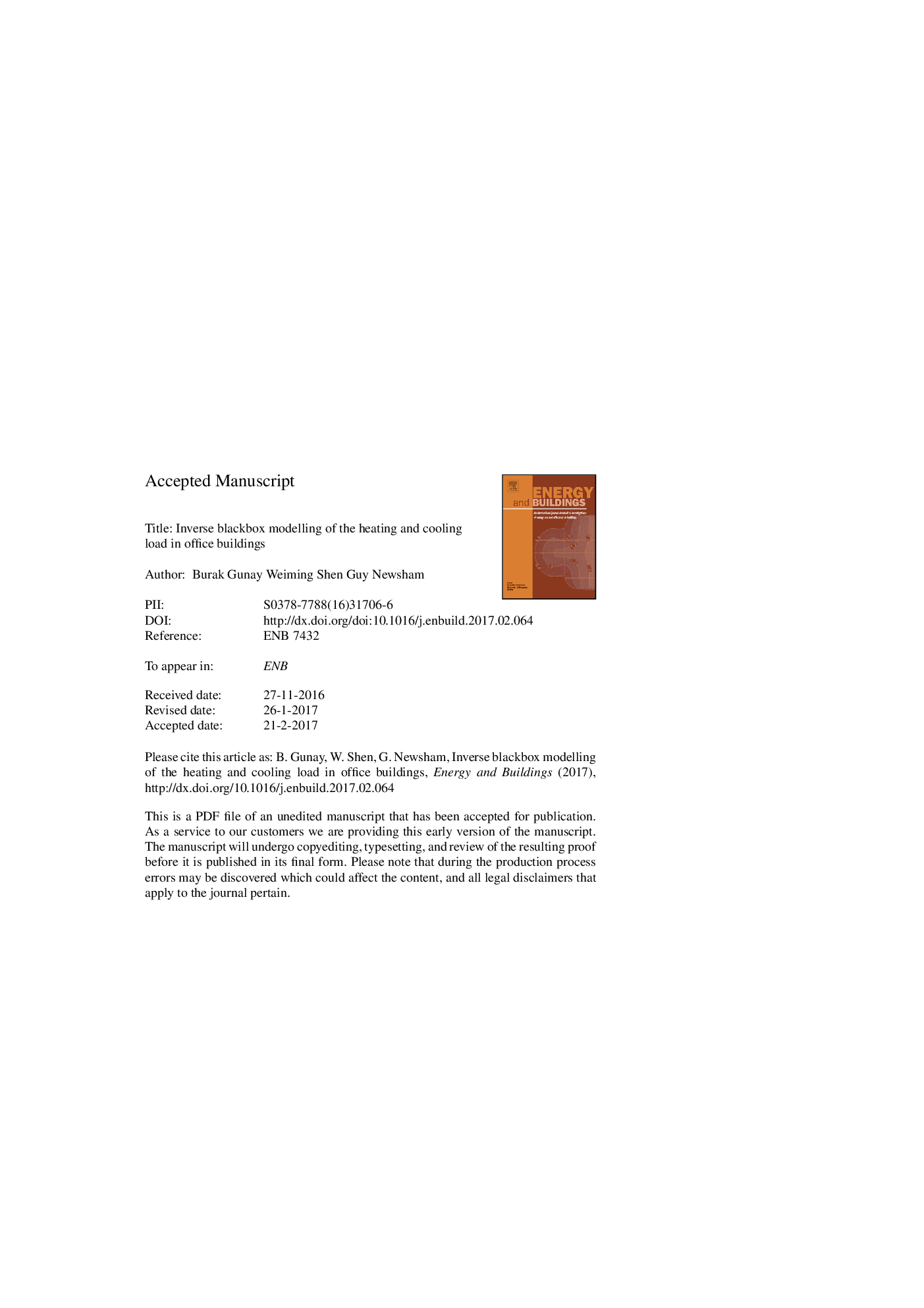| Article ID | Journal | Published Year | Pages | File Type |
|---|---|---|---|---|
| 4914219 | Energy and Buildings | 2017 | 47 Pages |
Abstract
This paper presents a systematic method to select an inverse blackbox model that can characterize the building-level heating and cooling load patterns parsimoniously. To this end, hourly heating, cooling, and electrical load data were gathered from five office buildings. In addition, concurrent weather data for temperature, solar irradiance, wind speed, and humidity were collected. Using the recent history of weather and electrical load data from the past three hours, 18 different forms of model at varying number of inputs and parameters were formulated for each of the five buildings. After assessing the models' performance through a cross-validation and a residual analysis, one of the models was selected. The selected model was the one with a one-layer artificial neural network, six inputs, and a one-hour input history. Then, through illustrative examples, different use-cases in which inverse blackbox models can support the operational decision making process are discussed.
Keywords
Related Topics
Physical Sciences and Engineering
Energy
Renewable Energy, Sustainability and the Environment
Authors
Burak Gunay, Weiming Shen, Guy Newsham,
